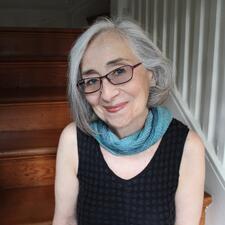Religion
Jane Evans

Eve: Apocrypha
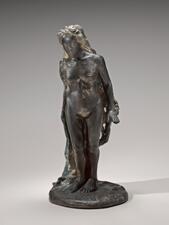
Eve: Bible
The first woman, according to the biblical creation story in Genesis 2–3, Eve is perhaps the best-known female figure in the Hebrew Bible, although she never appears after the opening chapters of Genesis. Most of the negative traits associated with her, including sin, seduction, and subservience, are part of Jewish and Christian post-biblical interpretations and are not present in the Bible itself. A close look at the Eve narrative in its ancient Israelite context shows Eve to be a partner with Adam as they begin their agrarian life outside of Eden.

Eve: Midrash and Aggadah
Eve’s character is posited to be that of the original and quintessential woman. The Midrash interprets her traits as representative of the negative aspects of femininity. Eve’s punishment for her sin is also tied to the traditional ideas of the fundamentals of womanhood – childbirth, pregnancy, and male spousal domination.
Ruth Fainlight
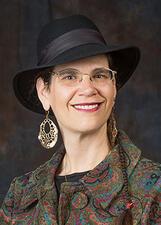
Mimi Feigelson
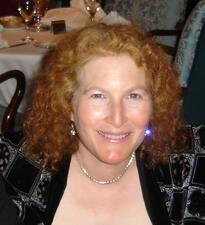
Nina Feinstein
Rabbi Moses Feinstein
Rabbi Moshe Feinstein, one of the great Jewish legalists of the twentieth century, wrote numerous legal decisions responding to and affecting women’s lives. His pronouncements regarding women aimed to respond to women’s issues with respect and careful consideration, while also establishing a system in which the roles of men and women were distinctly imbalanced.
Female Martyrdom
In various eras, Jewish women chose martrydom, or Kiddush ha-Shem (sanctification of the Divine Name), rather than repudiate God or transgress certain commandments. Examples appear in Jewish Hellenistic writings, rabbinic literature, Crusade chronicles, medieval Hebrew piyyut (liturgical poetry), accounts of the seventeenth-century Chmielnicki pogroms, and documents connected with the Shoah. Scholars differ, however, regarding the accuracy of these martyrological texts, which often reshape actual events to conform to iconic imagery.
Female Personalities in the Babylonian Talmud
Female Purity (Niddah)
Halakhic practice for Niddah, or female purity, is based on a harmonistic reading of Leviticus 12,15, 18, and 20. The laws of female purity have been historically used to determine the status of women in a patriarchal society.
Feminine Images of God
Jewish scripture includes few examples of a feminine or woman-personified God. The Hebrew Bible contains limited references to a female personification of God; God is usually explicitly described as a man. Medieval and contemporary theology have largely rejected the idea of divine gender, but some modern feminist theologians have interpreted texts to draw comparisons to the feminine experience.
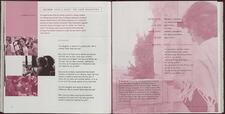
Feminist Jewish Ritual: An International Perspective
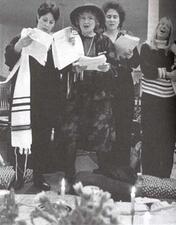
Feminist Jewish Ritual: The United States
Ritual behavior is one of the fundamental pillars of Judaism, and of all religions, whose concern is precisely with ultimate meaning and purpose. Since the 1970s, Jewish feminists have gained access to male-identified rituals, developed a wide variety of new rituals, and feminized core male rituals.
Feminist Theology

Festivals and Holy Days
According to halakhah, women are responsible for obeying all of Judaism’s negative commandments and for observing most of the positive ones, including the Sabbath and all of the festivals and holy days of the Jewish year. In some instances, however, male and female obligations on these days differ.
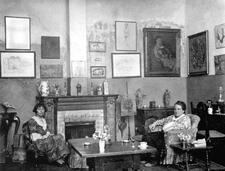
Fiction in the United States
Literature by American Jewish women reflects historical trends in American Jewish life and indicates the changing issues facing writers who worked to position themselves as Americans, Jews, and women.
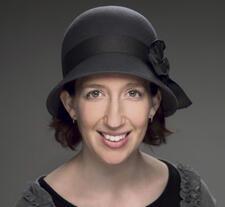
Rachel Kohl Finegold
Jane Brass Fischel
An outstanding communal leader in New York City’s Orthodox Jewish community in the early twentieth century, Jane Brass Fischel was a generous philanthropist and active participant in Jewish communal activities.
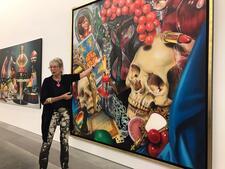
Audrey Flack
The only female member of the founding group of photorealists, New York-born painter and sculptor Audrey Flack is especially recognized for the feminine content in her art. Her feminist sensibilities manifest in both her pioneering paintings, which often consider stereotypes of womanhood, and her sculptures, frequently depicting goddesses and other strong female figures. Flack’s work appears in prominent collections around the world.
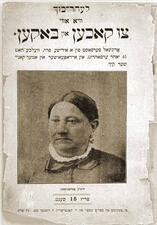
Food in the United States
Food and foodways are a critically important area of documenting and deciphering the evolving experience of American Jewish women from the earliest days of immigration to the present. Food is a lens into American Jewish women’s worlds of family, religion, identity, work, political action, entrepreneurship, and more as they have encountered the forces of assimilation, anti-Semitism, systemic racism, sexism, changing consumer economies, and the long women’s movement.

Karen Fox

Early Modern France
Until the Revolution and their acceptance as citizens, most Jews in France lived in officially recognized autonomous communities in the southwest and northeast. Within these communities, they established charitable institutions, elected a governing body, defined the curriculum of their schools, registered their births, marriages, and deaths, and adjudicated cases in their own courts.

Ray Frank
While her career was short-lived, Ray Frank remains significant as the first Jewish woman to preach from a pulpit in the United States. Her speeches often encouraged communal cooperation and tried to heal congregational disputes, and she notably gave an address at the first Jewish Women’s Congress in 1893.

